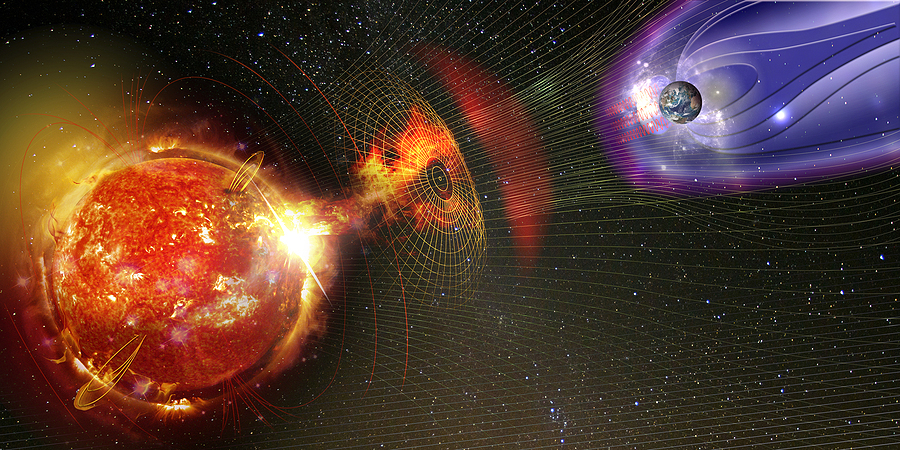What Becomes Of The Magnetic Field When A Star Dies?

The universe is a place of mystery, with only 5% of it being discovered and understood. In many ways, we are still amateurs fiddling about with our toy models, trying to comprehend the stars.
After all, the stars we see without the use of a telescope, just our naked eyes, are no more than approximately 10,000 light years away, which is a long time. With that being said, the stars’ lifecycle has a lot to share. They are more than just fiery balls of gas. They have their own magnetic fields that impact every point of their life from birth to death.
In this article, we will discuss what becomes of the magnetic field when a star dies.
The birth of a magnetic field in the stellar core
Under the influence of gravity, molecular clouds collapse, and the magnetic field within the clouds regulates the fragmenting and creation of stars. All in all, the dead stars’ magnetic field continues to play a crucial role in influencing the creation of new stars.
Every star, including our sun, has its own magnetic field that is produced from its outermost layer, called the solar corona. The magnetic field plays a vital role in several natural phenomena we might be familiar with, such as solar flares and sunspots.
What happens when a star dies?
When the star is still alive, its magnetic field impacts its behaviour and characteristics significantly. It can impact how the star rotates, expel materials into the surrounding space, and how much mass it loses gradually.
Additionally, it also plays a vital role in creating various star systems and the planets in it. However, like everything in the universe, there is a limited lifespan. When a star reaches a stage where it is no longer able to maintain fusion in its core, it proceeds to die.
When that happens, the star’s hydrogen fuel depletes, and it undergoes a transformation process, depending on its mass. High-mass stars culminate in a supernova explosion that usually produces black holes or neutron stars. Low-mass stars, on the other hand, expand into red giants before expelling their outer layers and disintegrating into white dwarfs.
Magnetic fields of highly dense stars
Recent research and observations have paved new perspectives into the mysterious nature of magnetic fields associated with dead stars.
One such result was derived from studying neutron stars, which are produced when high-mass stars explode. The neutron stars are highly dense and contain approximately the mass of our sun. They are also known to have a highly strong magnetic field.
The study showed that their magnetic field can stay for a long time, even after the star goes supernova. In certain cases, the magnetic field was even found to be able to influence the surrounding space.
However, not all dead stars maintain their magnetic fields close. Another study spotted a “magnetic zombie star” that was found to be moving towards our solar system, at least initially. However, further studies revealed that it was not moving towards us. Rather, its movement was caused by the interactions between magnetic fields in the distant binary system.
The origins of magnetic fields in the universe
The study of our universe’s magnetic field has been perplexing. In fact, there have been long studies of the possibility of magnetic monopoles. Another significant question is the origins of magnetic fields in the universe.
Many studies have shown the first magnetic field was created during the inflationary period from the quantum fluctuations of the early universe. As the fluctuations grew, so did the magnetic field. Knowing the fundamentals of our universe’s magnetic field allows us to understand better the smaller magnetic field within our stars and their remnants.
Conclusion
Even today, a lot is still unknown about the magnetic field of a dying or dead star, startling many astrophysicists and astronomers. The persistence and complexity of these magnetic fields show that while we are still a long way from discovering and understanding fully the physics behind our universe’s process, we have also come a long way, thus the 5% knowledge.
If you have always been interested in such a topic and hope to be part of this growing knowledge, then a strong fundamental in your physics knowledge is a must. Supplementing what you have learned in school with extra physics tuition is one way you can develop that fundamental. Contact us today to find out more!